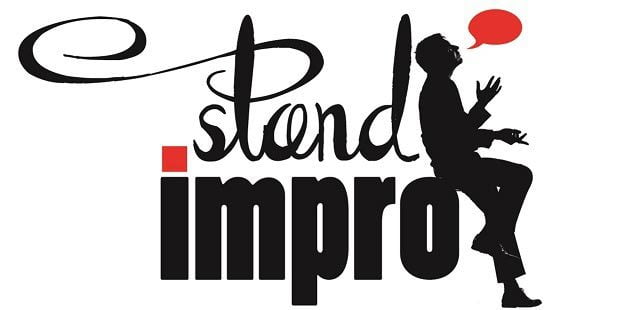elevator pitch
Takes initiative in the conversation
Structures the exchange, sets the tone, and steers the discussion toward real business issues.
Does not passively follow the client’s lead or expectations.
Adopts a consultative and co-creative posture
Does not act as a “service-oriented” salesperson.
Behaves like a partner who helps the client clarify their needs and make the best decision.
Creates perceived value
Doesn’t just sell a product, but a vision, a comprehensive solution, or measurable impact.
Connects the offer to the client’s strategic objectives.
Handles objections with assertiveness
Doesn’t justify or apologize, but reframes with tact.
Sees objections as opportunities to understand and convince more deeply.
Drives the sales process forward
Concludes each phase with a clear commitment (next meeting, trial, approved quote, etc.).
Owns the sales cycle and stays in the lead throughout.
In contrast: the follower or passive salesperson
Waits for the client’s questions.
Only responds to explicitly stated needs.
Focuses on product features.
Accepts a role of executor.
Competes solely on price without repositioning value.
1. Prospecting
Searching for new potential clients (leads).
Goal: Identify businesses that might be interested.
Example: An IT salesperson targets small industrial companies using outdated software.
Channels: LinkedIn, trade shows, email, cold calling, inbound marketing.
2. Qualification
Evaluating whether the lead has the budget, authority, need, and timeline (BANT method).
Example: During a call, the salesperson learns that the lead wants to switch solutions within 3 months and has an allocated budget.
3. Needs Analysis (Discovery)
Deep dive into the client’s context, challenges, and expectations.
Goal: Understand the situation to offer a tailored solution.
Example: A company wants to reduce transportation costs; the salesperson identifies a need for logistics optimization.
4. Presentation of the Offer
Customized pitch or demo based on the client’s needs.
Formats: Product demo, personalized quote, sales proposal.
Example: A PowerPoint presentation with ROI projections + a live demo of a SaaS platform.
5. Handling Objections
The prospect raises questions, concerns, or hesitations.
Goal: Reassure them, respond effectively, highlight the value.
Example: “It’s too expensive” → the salesperson shows the long-term savings generated.
6. Negotiation and Closing
Discussing terms (price, conditions) and signing the deal.
Example: The client requests a discount for a 2-year commitment; a mutually beneficial agreement is reached.
7. Follow-Up and Loyalty
The cycle doesn’t end with the sale. Post-sale support helps ensure satisfaction and builds long-term relationships.
Example: A follow-up call 1 month after product installation + offering a complementary service.
Objective Description 🎯 Understand key challenges Strategic, operational, and technical pain points 🎯 Qualify the actual need Go beyond surface-level needs to find the root cause 🎯 Create value Show that you understand the client’s business 🎯 Prepare a tailored proposal Adapt your solution and arguments accordingly 🎯 Build trust By demonstrating listening skills and a consultative approach
Objective
Identify the exact problem that your counterpart needs to solve.Contextual questioning
Contextual questions are similar to natural conversation. They make your client feel at ease and should not give the impression of a police interrogation.Example
“Have you noticed that this production system can be complicated and costly?”
“Are you the Industrial Director for this project?”
“Who will approve your approach internally?”
“What is your exact role in the project?”
“How has your experience with our company been so far?”Latent need/problem questioning
These questions are more difficult to ask because they will push the buyer out of their comfort zone. It is common for buyers to share their issues with some reluctance.
Here, the goal is to give the impression that the salesperson is working in the client’s best interest. The salesperson is thinking for them and inviting them to go further, to open up.
These questions naturally use words like “problem,” “concern,” “disadvantage,” “dysfunction,” or “dissatisfaction.”Example:
“Do you have trouble producing such small items?”
“What concrete problems are you encountering?”
1. Magnifying Effect (Impact Question)
➤”What happens if this issue isn’t solved in the next 6 months?”
This gets the client to project the problem into the future and think about its lasting effects.
2. Quantification
➤ “How many hours are lost each week because of this manual task? And what’s the cost per hour?”
Putting numbers to the problem helps objectify it. When the client says “we lose time,” help them translate that into hours, money, or customer satisfaction.
3. Comparison (Internal or External Benchmarking)
➤ “Did you know companies in your industry have cut that process by 40% in just 6 months?”
This creates a competitive trigger — motivating the client to act so they don’t fall behind.
4. Cascade Effect
➤ “Does this delivery delay also impact customer satisfaction? Has it led to lower retention or bad reviews?”
Identifying indirect consequences helps deepen the perceived severity of the problem.
5. Mirroring Technique
➤ “How would you feel if one of your suppliers delivered the same level of service?”
This is a powerful way to flip the perspective and help the client recognize a double standard or inconsistency in expectations.
The client must acknowledge and validate the impact and scope of the problem. Once this step is reached, the salesperson can begin to consider presenting a solution.
Features
Present the technical specifications and concrete attributes of your solution. Stay factual and precise without exaggeration to establish your credibility.
Advantages
Explain how the features translate into practical benefits. Highlight what sets your offer apart from the competition.
Benefits
Articulate the real impact on the client’s business. Quantify the economic, strategic, or organizational gains for the client as much as possible.
Demonstration
Support your claims with concrete examples, customer testimonials, or a live demonstration. Build trust by showing tangible results.
Price defense is based on benefits for the client
Always justify the price by highlighting the value and concrete advantages for the client.
A potential price reduction is done in exchange for something
Never grant a discount without getting something in return (volume, commitment duration, client reference, etc.).
Concessions made are decreasing
Each concession should be smaller than the previous one to signal that you are approaching your limit.
Saying no remains an option
Knowing when to refuse an unfavorable agreement preserves your credibility and the perceived value of your offer.
| Low Perceptionof ability to solve the need | High Perceptionof ability to solve the need | |
|---|---|---|
| LOW IMPORTANCE OF THE NEED | Zone of Disinterest The client feels neither a strong need nor trust. High risk of a passive objection: “Let’s wait” or “Not a priority.” | Client Comfort Zone The client sees your value but doesn’t feel urgency. Objective: Awaken a latent need. |
| HIGH IMPORTANCE OF THE NEED | Challenge Zone The need is real, but the client does not perceive you as the right solution. Objective: Build proof, credibility, and emphasize added value. | Ideal Zone for Closing The need is critical and you’re seen as a credible solution. Objective: Negotiate, reassure, and close the deal. |
Welcome without getting defensive
Maintain an active listening posture and openness to the client’s concerns, avoiding any defensive attitude that could harm the business relationship.
Clarify to understand the real objection
Use strategic questions to discover the client’s real concerns, often hidden behind the initially formulated objection.
Rephrase to validate
Summarize the expressed objection in your own words and obtain the client’s approval before proposing an adapted solution.
Respond with concrete elements
Provide tangible evidence, references, or demonstrations that directly address the objection raised by the client.
Verify that the objection has been addressed
Ensure that your response has effectively resolved the client’s concern by asking for confirmation before continuing the sales interview.
Categories of people
Identify the different profiles in the client organization:
- Decision-makers – those who validate budgets and commitments
- Influencers – those who guide strategic choices
- Technicians – those who will concretely use your solutions
Contact typology
Map your network within the organization:
- Allies – actively support your proposals
- Passive – neutral or indifferent to your offer
- Detractors – opposed or reluctant to your solution
Sustaining the conversation
Maintain a constructive dialogue centered on:
- Evolution of the business and new needs
- Strengthening the relationship
- Success of implemented solutions

